Which wood should I choose?…
Over our three decades of experience within joinery for bespoke timber windows & doors, the most frequently asked question by our clients, architects and builders are;
- What’s the difference between softwood and hardwood?
- Why do you use X wood when others use Y wood?
- What’s going to last the longest and need minimum maintenance?
If you’re new to the world of wood, it can be difficult to know which wood to go for.
Is the extra investment into the wood worth it? Or is it just an upsell?
At the end of this article, you’ll understand the difference and confidently decide that best suits your project.
Softwood vs. hardwood
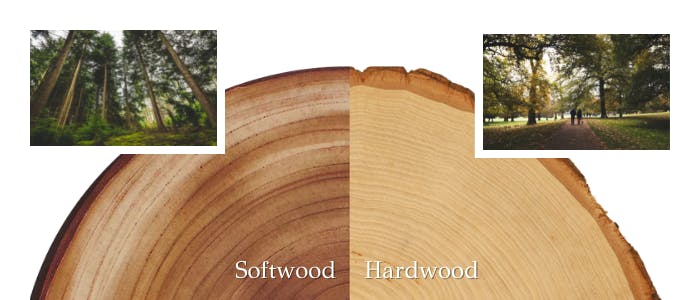
The first thing to know is that there are two different types of timber – softwood and hardwood.
When you chop trees up into logs, you’ll see the rings on the inside of the trunk. With softwood, the gaps are usually more spaced out, but the rings are closer together with hardwood, and the closer the rings are together, the more dense the wood is.
Is density a good indication of quality?
Sadly not, because you can get dense softwoods and light hardwoods.
So, when choosing a type of wood that can fight against swelling, warping and rotting, we should understand how softwood and hardwood trees interact with the one thing these problems have in common… water.
Softwood Trees
If you’ve ever been to a “cabin in the woods”, you’ve most likely been surrounded by softwood trees. Softwood is fast-growing. For example, pine trees. They have needles instead of leaves and use cones to reproduce.

Hardwood Trees
You’ve probably seen hardwood trees when walking your dog in the park. Hardwood trees are flowering, producing seeds, nuts, etc. They are known for the broad leaves they typically lose during the winter.

Why does this matter?
This seemingly insignificant detail makes a significant impact on the life of your windows and doors.
Apologies, I’m about to get a little scientific but bear with me – it’s important!
Timber loves to suck up water and likes to retain it. Softwood is more efficient at sucking up water and has more capacity to store it than hardwood does.
Think of timber as being made up of lots of tiny straws. Each of these straws has little pockets, meaning there’s lots of room for water to be absorbed when sash windows or French doors get wet, especially if they’ve been made from softwood.
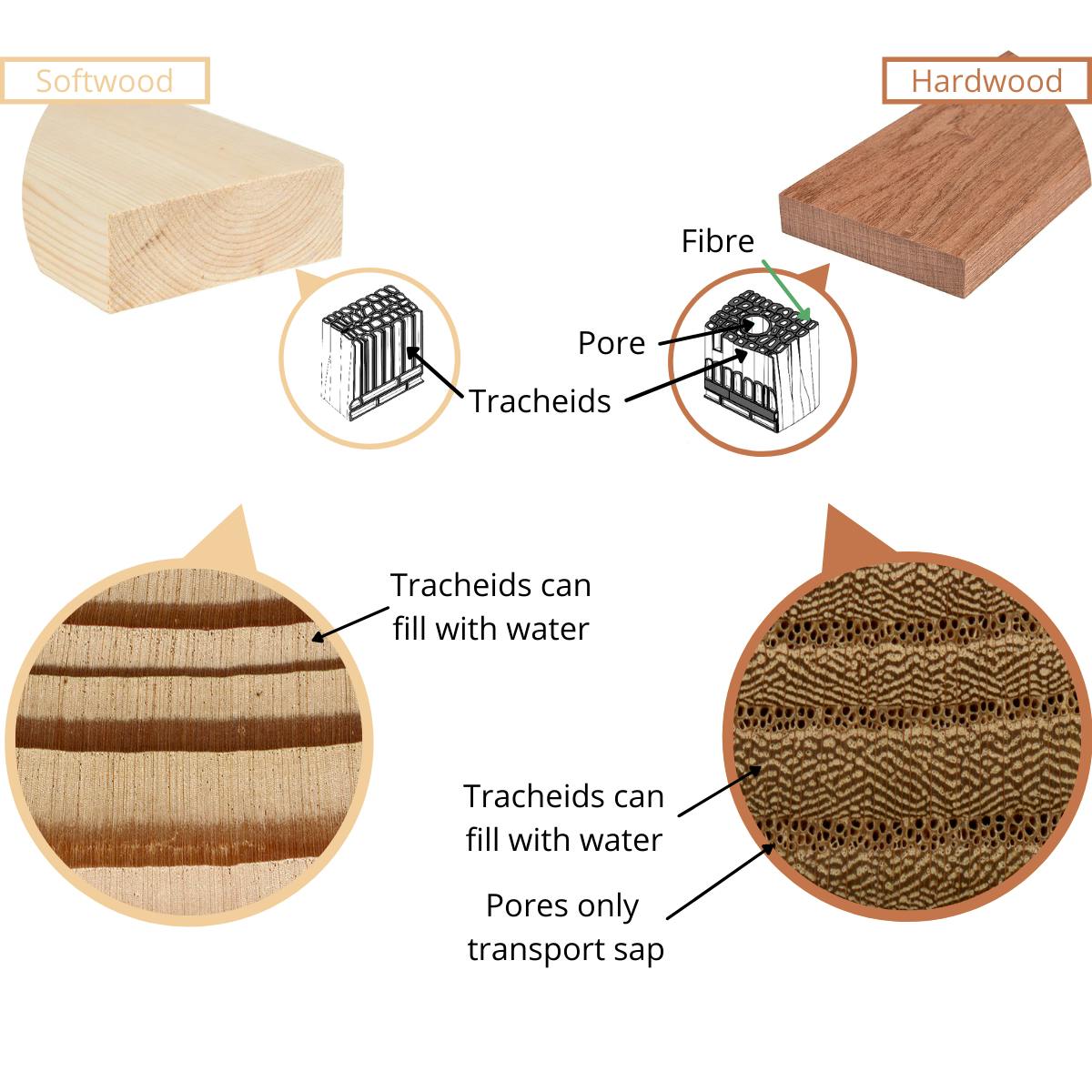
The less dense the wood, the more ‘straws’ there are. On a wonderfully wet British day, these straws soak up all the water they can and store it within the window or door. Then once the sun hits the wood, the water expands and jambs your window or door shut. This stored water can cause irreparable damage over time because it’ll rot your window or door from the inside (behind the paint).
Our recommendation on softwood
Softwood windows or doors may be cheaper, but they will end up costing you in the long-run because they simply don’t last without frequent re-painting and can be expensive to keep repairing. Around 20 to 30% of softwood windows have to be replaced during their first 10-year maintenance cycle.
It’s why we never recommend softwood for timber sash windows, casement windows and especially not for French doors.
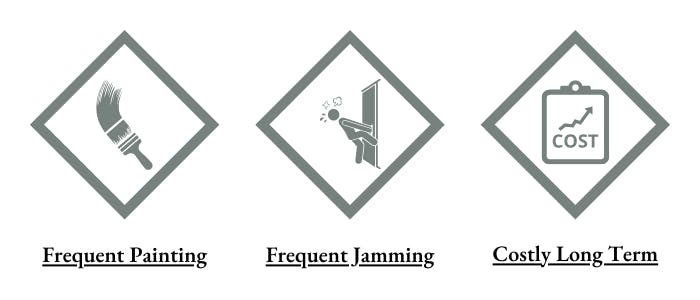
Which types of wood do we use?
We use engineered (TEC) Sapele and Accoya wood.
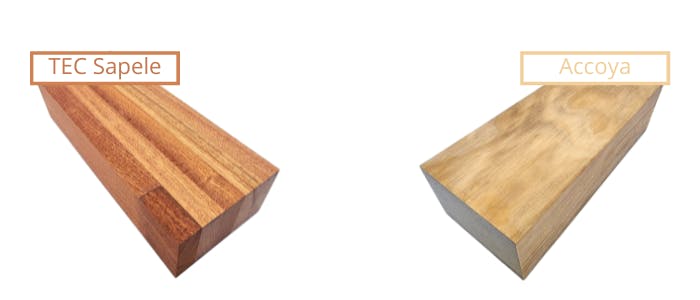
Sapele
Sapele is a north African hardwood that’s part of the mahogany family. It looks beautiful and has incredible rot resistance. It takes at least 10 years for rot to set in, unlike softwood, which can start to rot in just 1 to 2 years.

The Sapele we work with is engineered. Whenever I tell our clients our timber is engineered they start to picture engineered flooring, i.e. it’s a mix of timber and MDF, but this isn’t the case.
Hardwoods like Sapele or Oak are durable and robust but they bend, expand and contract because of the tension in the wood. Unlike softwood, hardwoods are not flexible, so if they do expand or bend out of position they rarely move back. This results in stuck sashes, unopenable casements or doors and allows for draughts to come in.
We want to remove the tension in the Sapele planks we machine into our traditional windows and doors.
We do this by;
- Cutting the timber planks into smaller pieces.
- Remove any small knots and imperfections present in the wood.
- Join the pieces of Sapele together on the length.
- Arrange each length so that the grains are reversed and glue them together.
- Clamp them until the glue sets like cement and you have a multi-layered, rot-resistant and stable piece of timber.

This technique of stabilising wood through lamination has been around for over one hundred years. In fact, most tall church or cathedral doors would have been made with timber using this exact process.
Up until now, we’ve discussed the horrible effect water has on the wood in your windows and doors. By using Sapele we reduce the efficiency and potential water the wood can store along with Sapele having an exceptionally high rot resistance. To counter the bending and movement we’ve laminated the timber together to make it highly stable.
So then, what do we need Accoya for and why is it more expensive than engineered Sapele?
The scientific defence against water….
The company Accsys have turned your everyday Radiata pine, one of the lowest durability woods available, into a wood that can out-perform even the toughest tropical hardwoods and Oak. How have they done this? Through the process of acetylation.
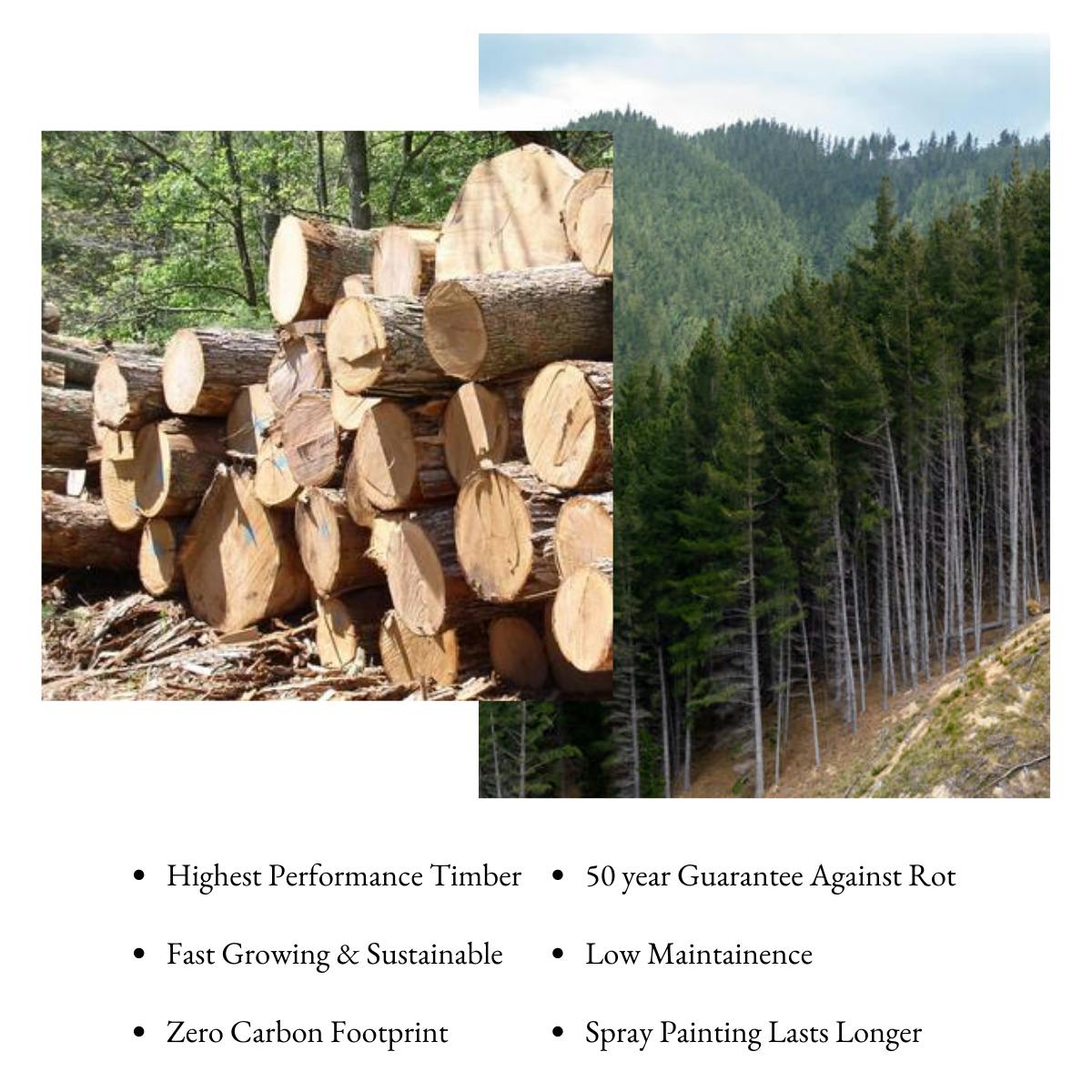
There’s a bit of science to Accoya. The straws we mentioned up above, that hold water, the clever people at Accsys have found a natural way to make sure that they can’t absorb water anymore.
They do this by pressure treating the wood with Acetyl (essentially strong vinegar) which naturally occurs in wood already. Because the Acetyl takes up the spaces within the cells, the water doesn’t have anywhere to sit and isn’t absorbed into the wood.
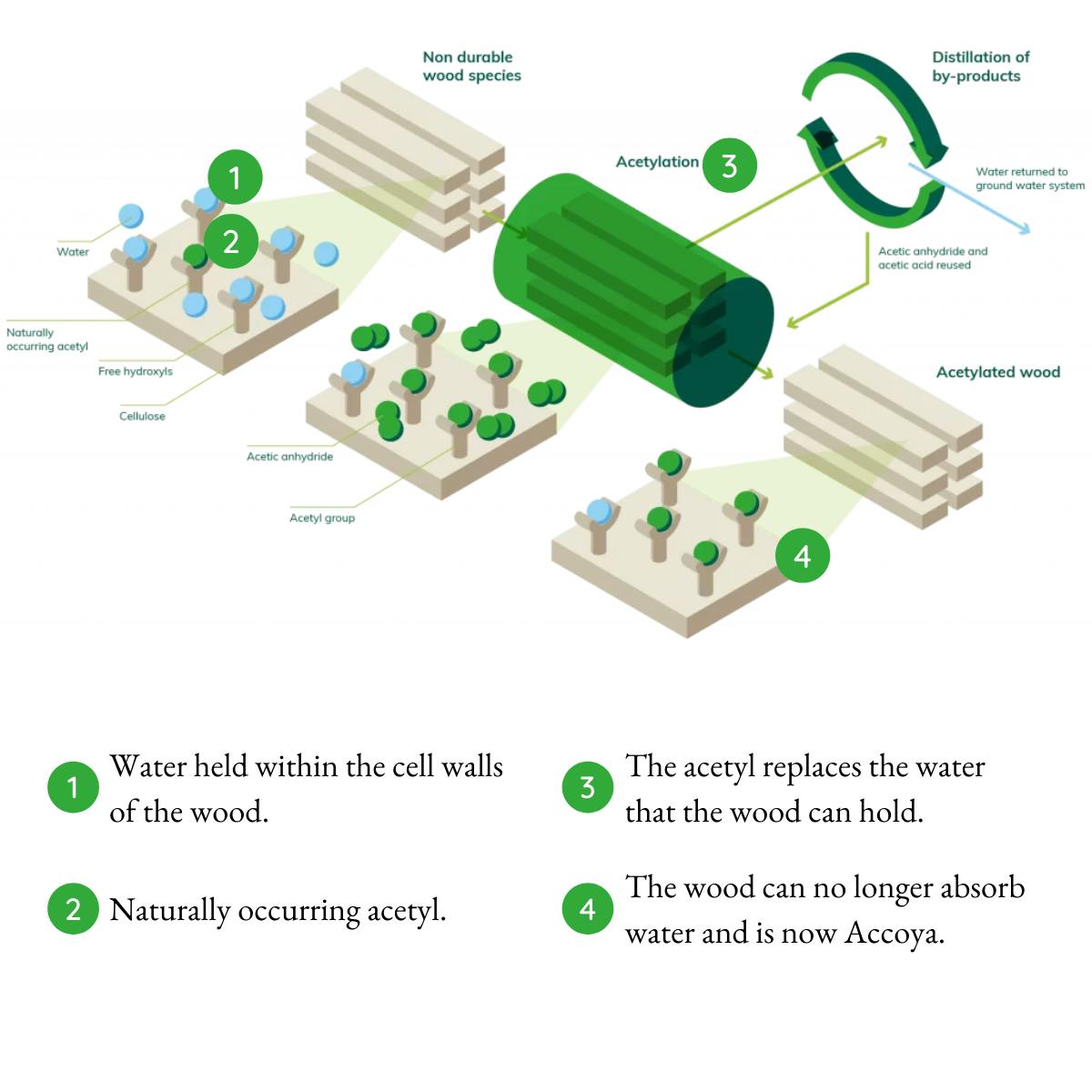
It also means there’s no way it can rot due to the fact rot needs water to develop. Accoya isn’t affected by insect attacks either.
It’s available in 3 different grades. Grade 1 is the best grade and only grade we use, followed by grades 2 and 3.
If you can, always chose Accoya. It may be more expensive, but it will provide you with a return on your investment within 10 years. There’s no rot, on-going maintenance, such as painting, to worry about and it’s environmentally-friendly too!
But you know your home much better than we do, so if you would like some of your windows or doors in Accoya and the rest in Sapele, that’s perfectly fine. We can do both and are highly skilled at working with both of these options too.




